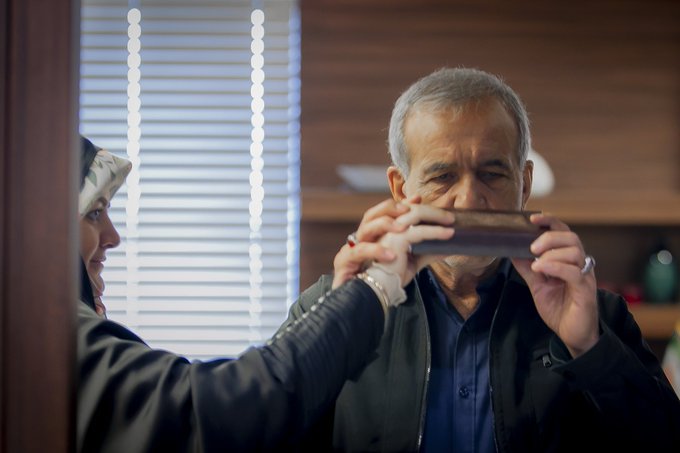Reformist Massoud Pezeshkian has been elected as Iran’s new president, beating his hardline conservative rival Saeed Jalili.
Dr. Pezeshkian emerged victorious with 53.3% of the votes counted, surpassing Mr. Jalili who polled at 44.3%. The runoff followed an initial election round on 28 June where no candidate secured a majority, amidst a historically low voter turnout of 40%.
The election was prompted by the death of Iran’s former president Ebrahim Raisi in a helicopter crash in May, which also claimed the lives of seven others.
Ahead of the official announcement by Iran’s interior ministry, supporters of Dr. Pezeshkian took to the streets in Tehran and several other cities to celebrate. Social media videos captured scenes of predominantly young people dancing and waving his campaign’s distinctive green flag, while passing vehicles honked their horns in jubilation.
Dr. Pezeshkian, a 71-year-old cardiac surgeon and member of Iran’s parliament, has been vocal against Iran’s controversial morality police and sparked attention by pledging “unity and cohesion”, alongside ending Iran’s “isolation” from the international community.
He has also advocated for “constructive negotiations” with Western powers to revive the faltering 2015 nuclear deal, under which Iran agreed to limit its nuclear activities in exchange for easing Western sanctions.
In contrast, his opponent Saeed Jalili supports maintaining the current stance. The former nuclear negotiator enjoys strong backing from Iran’s most conservative religious communities.
Mr. Jalili is renowned for his staunch anti-Western views and opposition to reinstating the nuclear deal, which he believes violated Iran’s fundamental principles.
Voter turnout in the recent election round reached 50%, marking an increase from the previous week’s historically low turnout since the 1979 Islamic revolution, reflecting widespread discontent.
Many Iranians boycotted the elections due to dissatisfaction with the limited choice of candidates dominated by Islamic hardliners and the perceived lack of potential for real change under tight control by the supreme leader.
Some who abstained from voting in the first round were motivated to support Dr. Pezeshkian in the runoff to prevent Mr. Jalili from assuming the presidency. They feared Mr. Jalili’s victory could lead to increased international confrontation, more sanctions, and further isolation for Iran.
Both candidates had to pass a vetting process conducted by the Guardian Council, composed of 12 clerics and jurists with significant influence in Iran, which disqualified 74 other candidates, including several women.
Criticism from human rights organizations has targeted the Guardian Council for excluding candidates deemed insufficiently loyal to the regime.
Following years of internal unrest, culminating in widespread protests against the regime in 2022-23, many young and middle-class Iranians harbor deep mistrust toward the government and have previously refrained from voting.
On Iranian social media, the hashtag “traitorous minority” gained traction, urging people to abstain from voting for either candidate and labeling voters as “traitors.”
Supreme Leader Ayatollah Ali Khamenei has dismissed suggestions that the low turnout reflects a rejection of his leadership.
“There are reasons [behind the low turnout] and politicians and sociologists will examine them, but if anyone thinks that those who did not vote are against the establishment, they are plainly wrong,” he said.
In a rare move, he acknowledged that some Iranians do not accept the current regime. “We listen to them and we know what they are saying and it is not like they are hidden and not seen,” Mr Khamenei said.



